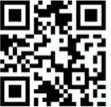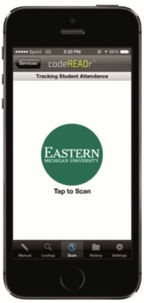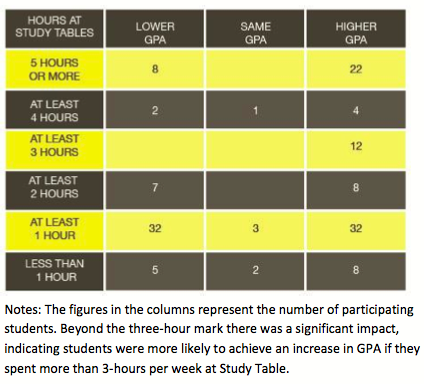College Uses QR Codes To Improve GPAs
 Using QR codes and the codeREADr app, Eastern Michigan University tracked student attendance at special study programs. The resulting data demonstrated a clear return on investment in these programs for both at-risk students and the University.
Using QR codes and the codeREADr app, Eastern Michigan University tracked student attendance at special study programs. The resulting data demonstrated a clear return on investment in these programs for both at-risk students and the University.
Background
It's difficult to measure if special programs offered by universities on behalf of their students actually improve GPA performance as a result of student engagement with such programs. It can also be a challenge to keep track of attendance, especially when attendance is mandatory. Traditionally a sign-in sheet is used, but this process can easily run into trouble if the sheet gets lost or if an error occurs during data input. Using an electronic check-in system would save time and reduce the chance of human error.
The Challenge
Eastern Michigan University (EMU) wanted to make sure that students were spending the required amount of time at the university's "Learning Beyond the Classroom" programs (LBC) and other educational activities. EMU also wanted to know the correlation between more time spent at 'Study Tables' (a structured out- of-classroom studying environment) and GPA improvement. This attribution was especially important in measuring the GPA impact of time spent at Study Tables by at-risk student-athletes and of students from two of the university's Greek organizations that were on academic probation.
EMU considered using a swipe card to track attendance, but found that the implementation cost for swipe card readers, tracking software and system integration was prohibitive. EMU instead looked at QR codes as a lower cost alternative, but needed a way to successfully implement them.
EMU needed an easy way to create a barcode database, scan the barcodes, validate them against the database and generate reports. They also needed to make the program-centric, so that administrators would know which events were attended and the hours spent for each LBC program.
The Solution
 EMU created an online database of student email addresses (called a ‘validation database’); embedded those addresses in QR codes; printed them on labels; and attached them the labels to each student’s existing ID card. Each LBC program was linked to a validation database and app-user IDs were given to those authorized to scan for each program.
EMU created an online database of student email addresses (called a ‘validation database’); embedded those addresses in QR codes; printed them on labels; and attached them the labels to each student’s existing ID card. Each LBC program was linked to a validation database and app-user IDs were given to those authorized to scan for each program.
The QR codes were then scanned at each event using smartphones, tablets or iPods with the codeREADr app installed. When scanned, the app captured the email address embedded in the code along with any data associated to it in the validation database. It also recorded the time of the scan and prompted the app user to confirm via multiple-choice whether they were checking-in or checking-out the student for that day’s program.
EMU filtered and downloaded scan reports to track each student’s attendance and the time spent at each program. Each email address had the student’s name and their official EMU ID associated to it in an offline database for report correlation purposes. Over a period of time, scan data was analyzed in relation to other data, including the student’s GPA before and after attending the program.
The Results
 EMU ran a trial to track mandatory attendance of student-athletes at the Study Tables program. EMU was able to verify who attended, what days they attended, what time they checked in and how long they stayed.
EMU ran a trial to track mandatory attendance of student-athletes at the Study Tables program. EMU was able to verify who attended, what days they attended, what time they checked in and how long they stayed.
Because of simple deployment, affordability and ease of use, the codeREADr system was readily scalable. As John Williams of EMU academic affairs put it, "This was a very flexible, very customizable and extremely cost effective system that could be easily administrated.”
With a larger scale implementation, EMU tracked Study Table attendance of student’s belonging to two of the university's Greek organizations. The resulting data showed that students who spent more time at Study Table were more likely to increase their GPA from the fall 2012 semester to the winter 2013 semester. While the results may have been predicted, having supporting data allows for a better understanding of program value and actual performance. EMU attributed the time spent at Study Tables as a contributing factor in removing two Greek organizations from academic probation. 
Due to the success of these pilot programs, the system has been expanded to other LBS programs, including math lab, tutor appointments, book checkouts and supplemental instruction sessions.
In the future, EMU plans to use the data they collect to keep students informed of their status. As Williams put it, “I think in the past, students have been in limbo somewhat in terms of knowing where they are with their various credits and attendance.” Now the new data can be fed into the EMU system to help keep the students informed and help EMU make informed decisions about the programs they invest in on behalf of their students.
Addendum
EMU chose the ideal data capture method for identifying students, namely QR codes - both printed and mobile. However, other capture types can also be used, including linear barcodes, magnetic stripes, NFC or other barcode formats (e.g. PDF-417).
About Eastern Michigan University
Eastern Michigan University (Ypsilanti, MI) is an educational institution serving over 23,000 students in their undergraduate and graduate programs. EMU offers an extraordinarily practical, supportive, accessible, affordable, quality learning and living environment.
The codeREADr app and SaaS platform allows service providers to track and validate IDs linked to assets and credentials, especially for ticket validation, event attendance, inventory, equipment, property and asset tracking. The company is located in the Boston, MA metro area.
For more Solutions article please click on the Solutions button on the menu bar above.
Subscriptions to the Bar Code News(tm) are free, and are available daily, weekly or monthly. We do not sell, rent or share our lists, your privacy is respected. Click here to subscribe.
Other articles that may interest you:
Measuring QR Code Response And Ad Performance
